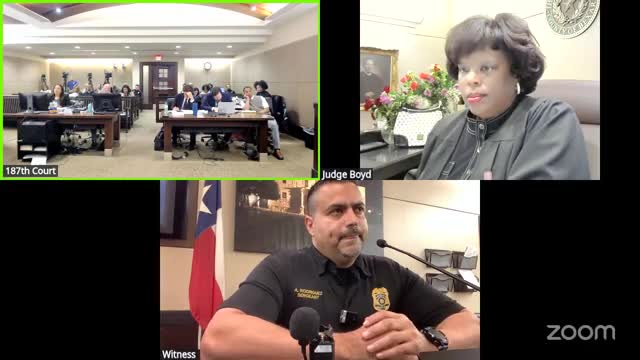Witness confirms Tamora McIntyre's affiliation with Long Beach Insane Crips gang
April 17, 2025 | Judge Stephanie Boyd 187th District, District Court Judges, Judicial, Texas
Thanks to Scribe from Workplace AI , all articles about Texas are free for you to enjoy throughout 2025!

This article was created by AI using a video recording of the meeting. It summarizes the key points discussed, but for full details and context, please refer to the video of the full meeting. Link to Full Meeting
The witness explained that when individuals enter correctional facilities, they are questioned by classification officers about their gang affiliations to ensure they are housed safely, away from rival gangs. This process is crucial for maintaining order within jails. The witness confirmed that McIntyre had been listed in the Tex Gang database, which tracks gang affiliations across Texas, but noted that he had since been removed after five years without validation.
The discussion highlighted the complexities of gang structures, particularly how they can differ between incarcerated individuals and those on the streets. The witness acknowledged that while the Crips operate as a criminal enterprise, various subsets may not share affiliations or objectives, leading to conflicts even among those who identify as Crips.
Despite the witness's extensive knowledge of gang activities, he admitted to never having investigated any members of the Long Beach Insane Crips directly. His insights were primarily drawn from literature provided by law enforcement associations, emphasizing the challenges in understanding gang dynamics across different regions.
This testimony underscores the ongoing efforts by law enforcement to navigate the intricate world of gang affiliations and the implications for public safety. As the case unfolds, the court will continue to examine the evidence surrounding McIntyre's alleged gang ties and the broader impact of gang activity in Texas.
Converted from Judge Boyd's Zoom Meeting meeting on April 17, 2025
Link to Full Meeting
Comments
View full meeting
This article is based on a recent meeting—watch the full video and explore the complete transcript for deeper insights into the discussion.
View full meeting